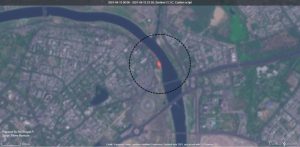India Reports Its Highest Daily Death Toll Amid COVID-19 Surge
COVID's second wave in India is becoming deadlier. As per health economists, the country may see over 2000 daily deaths by the first week of June
As per the latest government bulletin, India, on Sunday, reported 1,620 COVID-19 deaths, the highest ever since the beginning of the pandemic, and 2.73 lakh new cases of the virus. For the fifth straight day, the country has reported more than 2 lakh cases of the virus. A total of 1.5 crore Indians have been infected, and the total death toll stands at 1.78 lakh, as per government figures. This comes at a time when several state governments have reported a shortage in the stocks of oxygen supplies, medicines, and hospital beds.
The COVID-19 death rate in the country now stands at 1.19%. The positivity rate has also doubled from 8% to 16.69% in 12 days, which has become a cause of great concern. Several media organisations last week reported that the figures of COVID-19 deaths were being hidden under the garb of ‘co-morbidities’, especially in Gujarat, Bihar, Kerala, West Bengal, Rajasthan and Uttar Pradesh. This has invited analysts to state that death toll might be much higher than what is being reported in the official bulletins, and the idea that the second wave is not deadly, might only be a superficial concept.
“7-day average daily deaths are 1226 now. It was 1165 during the peak of the 1st wave! Our daily cases are yet to peak and we must expect much more deaths in the coming days,” Kerala-based health economist, Dr. Rijo M. John said.
A report of the Lancet Covid-19 Commission by India Task Force members said on April 15 that India may soon clock 2,000 COVID deaths in a day. “The peak in deaths may rise to India reporting 2,320 COVID-deaths by the first week of June,” it said.
Also Read : Delhi Surges with 13.5K Cases; Surpasses Mumbai as the COVID Capital
The Conundrum of Unofficial Figures
As the surge of COVID cases began, stories of crematoriums reaching their peak limits started leaking out from across the country. The Baikunth Dham in Lucknow became the center of media attention as members of the Indian National Congress uploaded a video of tin sheets being put up to cover mass funerals. Soon, satellite imagery of the area was released which showed multiple cremations taking place at the same time.

“This is the first time S2 SWIR bands have captured effects of fire in this crematorium – probably due to open ground funeral pyres,” Raj Bhagat, a Bangalore-based satellite mapper said. The image was taken through the European satellite Copernicus Sentinel 2. A PTI report said that on the afternoon of April 14 (Wednesday), there were 124 bodies at Baikunth Dham and Gullala Ghat, according to crematorium staff. The figures were 120 and 130 on Tuesday and Monday. On usual days, about 10-20 bodies are cremated there. On the day, official figures put Lucknow’s cases at 5,433 cases and deaths at 68.
A similar case of mismatched death figures also surfaced in Gujarat. Reportedly, many hospitals in the state do not mention COVID-19 as the cause of death in the case of patients who have co-morbidities. Last Friday, the official state bulletin reported 78 deaths. However, in Ahmedabad, Rajkot, Surat, Vadodra, and 3 other cities, 689 bodies were cremated whilst following COVID-19 protocols. There were also reports of furnaces of a few crematoriums melting due to a sudden surge in COVID bodies in Surat. However, Gujarat CM Vijay Rupani denied all allegations and said that deaths were not being under-reported.
Ramanan Laxminarayan, Center for Disease Dynamics, Economics and Policy, in an interview with Indiaspend, said that “Indians should not believe the myth that COVID-19’s second wave has a low mortality rate.” Mr. Laxminarayan, a senior research scholar at the Princeton University. “COVID-19 works with a 10-day lag for infections and then a 10-day to two-week lag post that for mortality. Everything that we see happening now was dictated by behaviour that happened two to three weeks ago, when the virus was indeed in everyone’s rear-view mirror,” he added.
